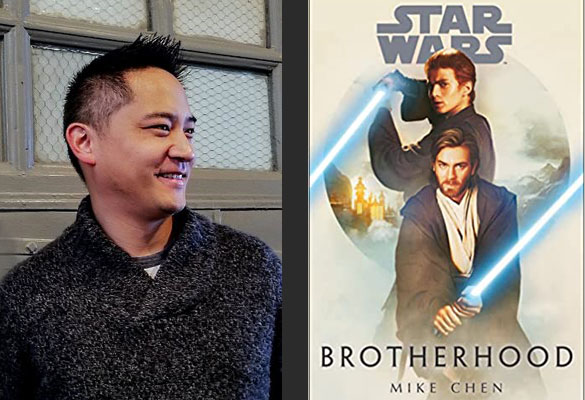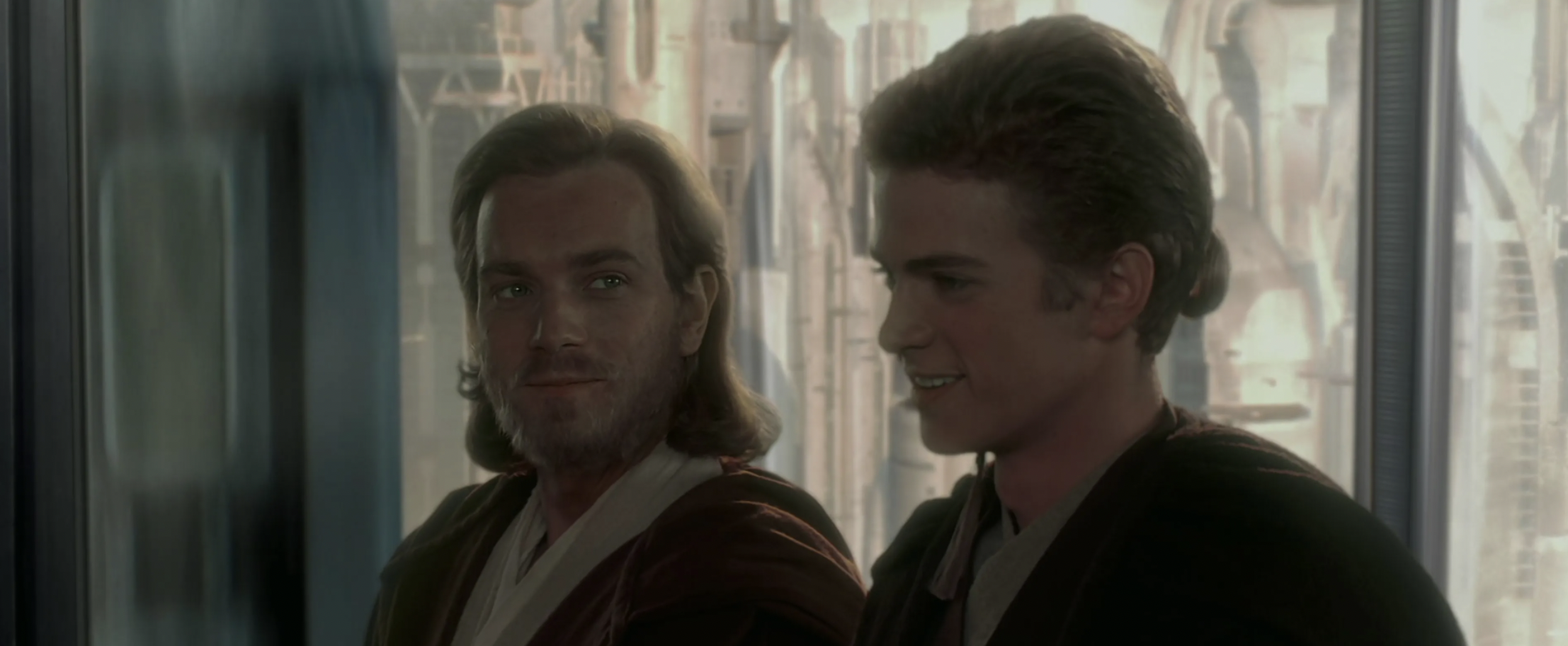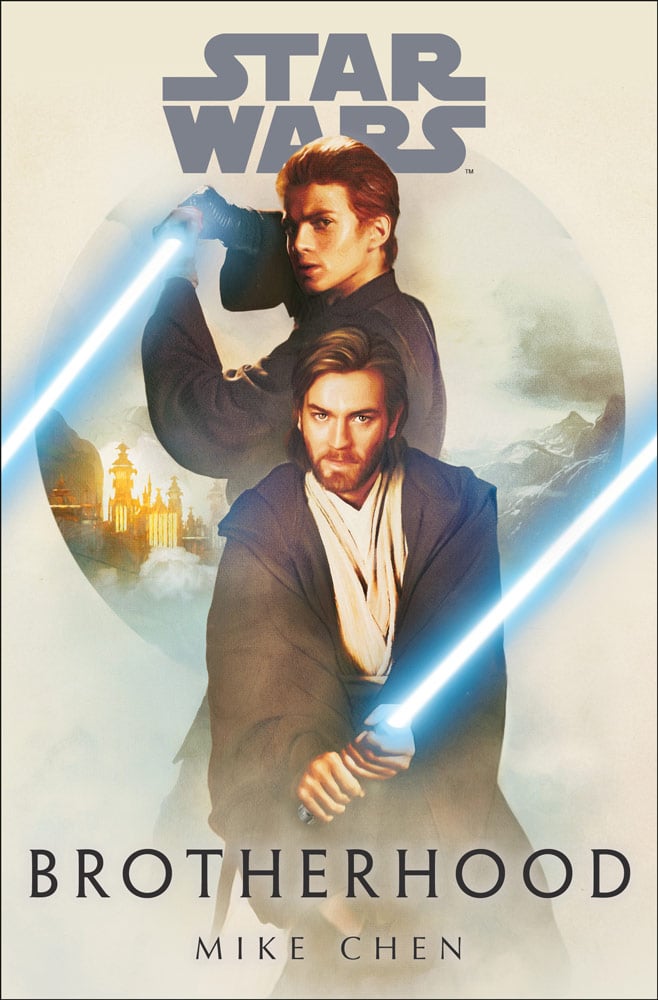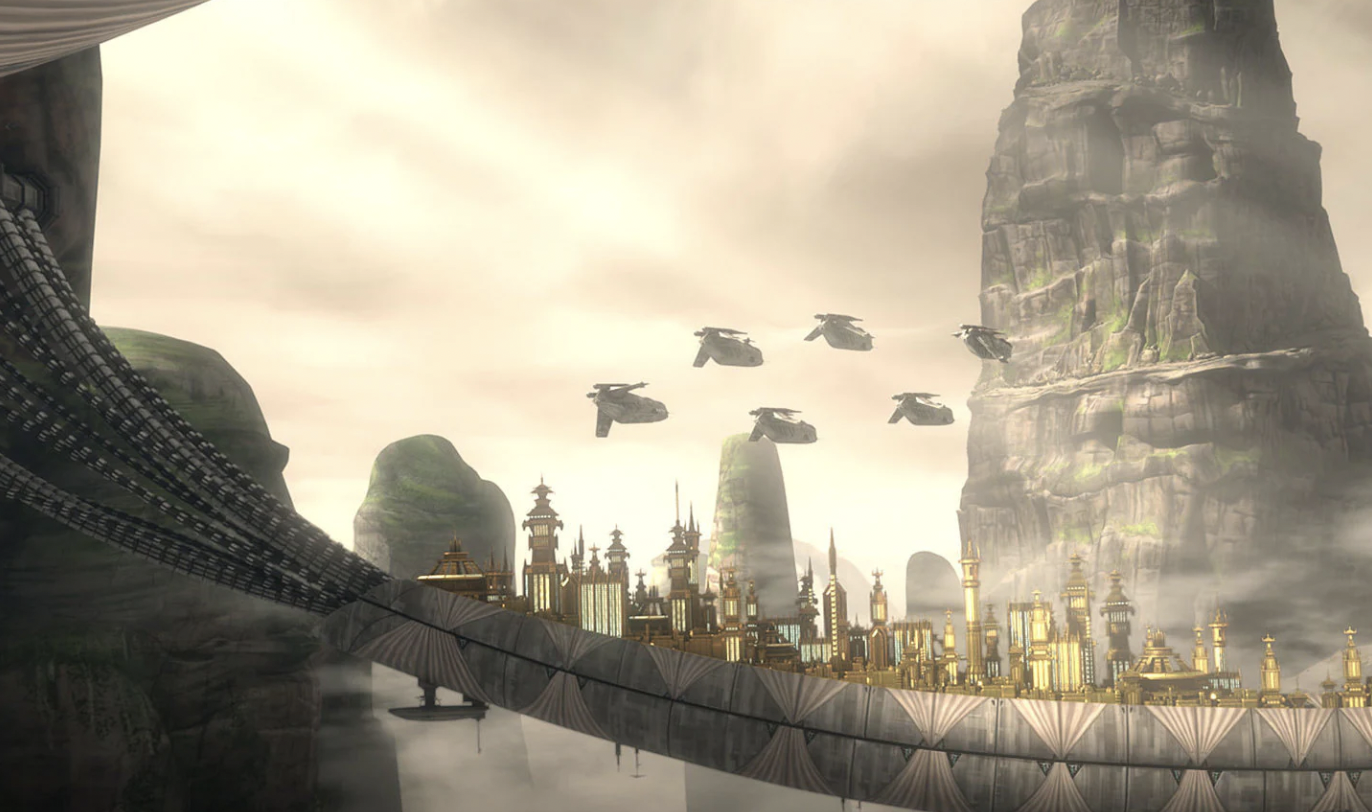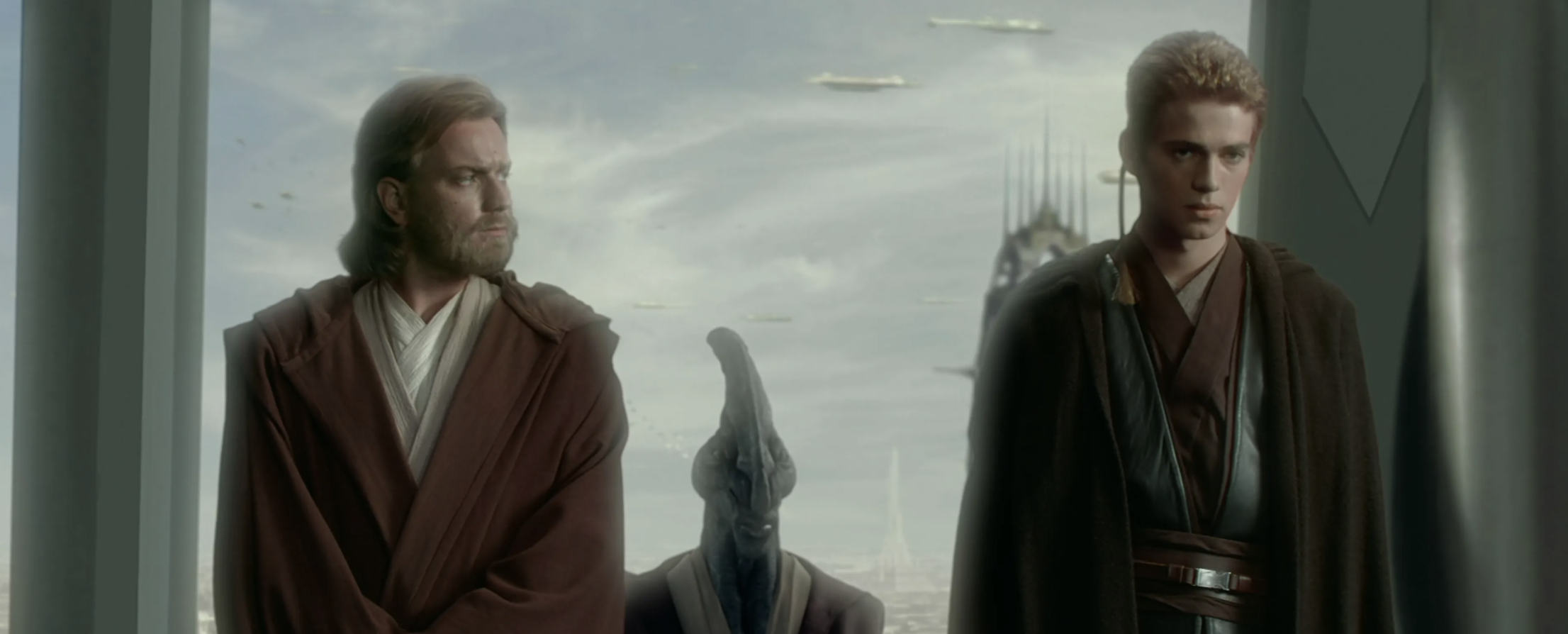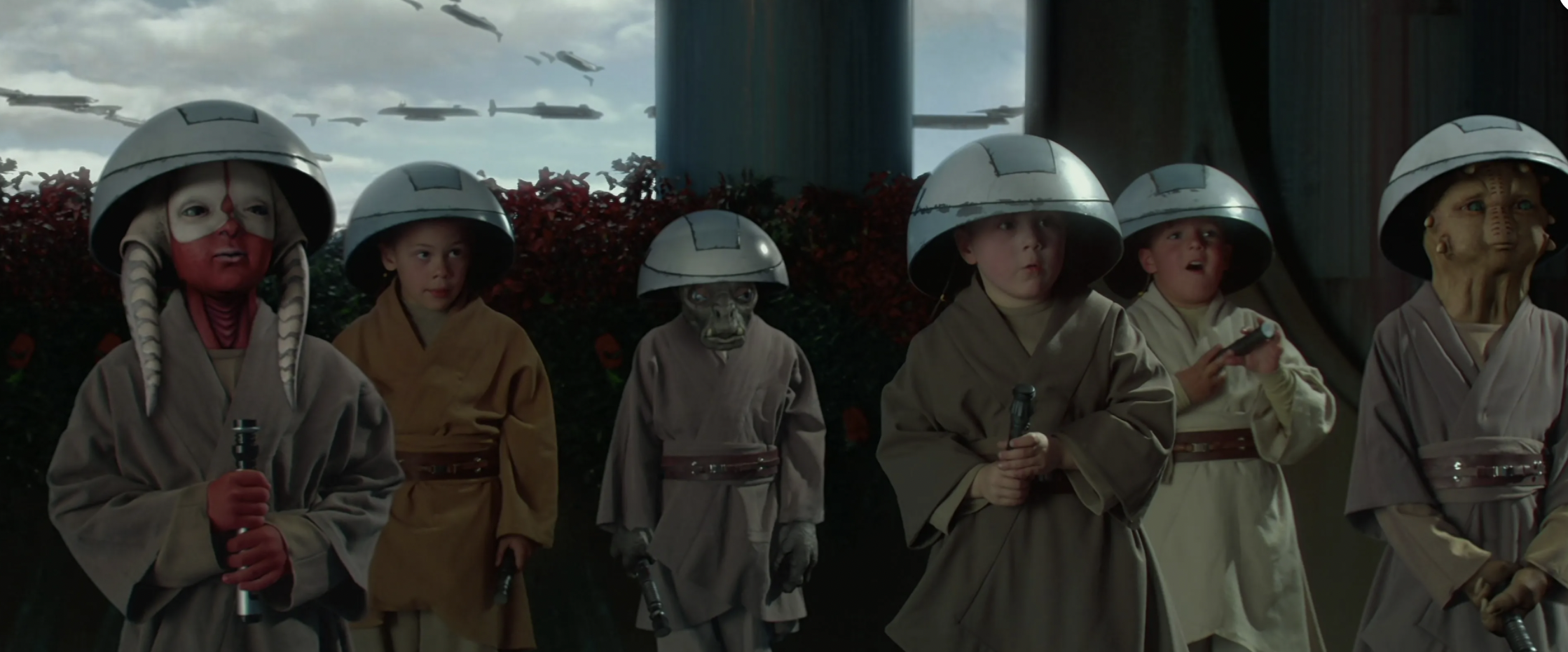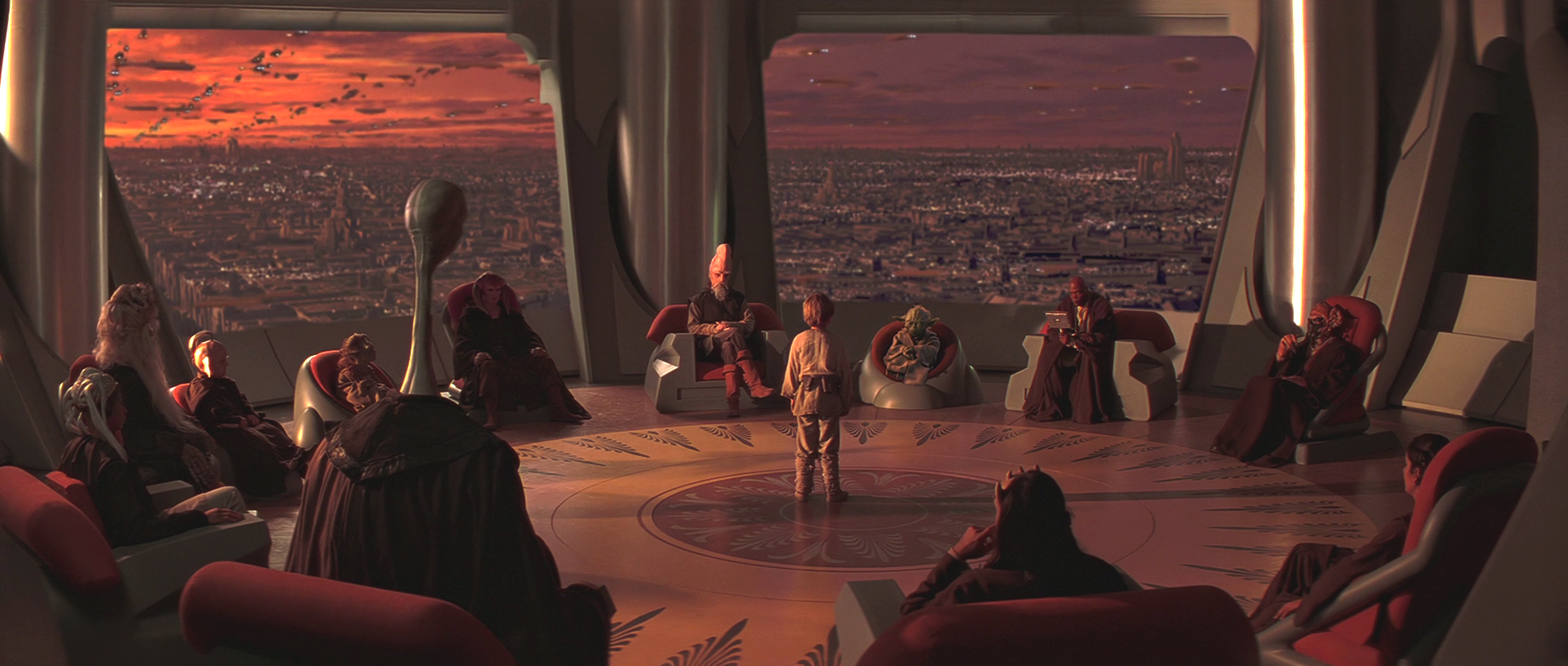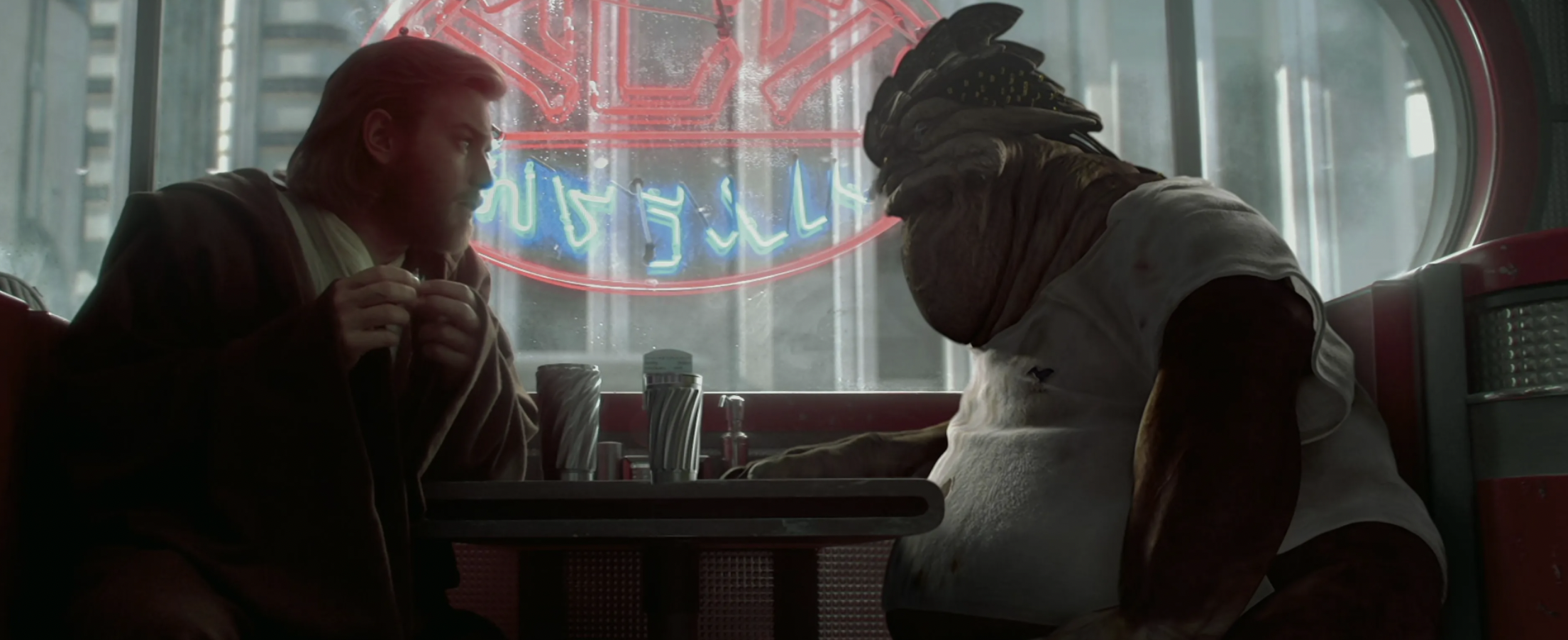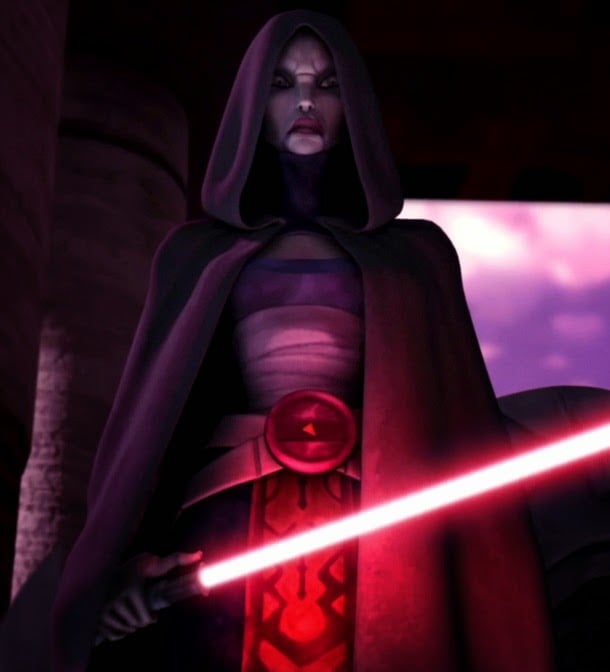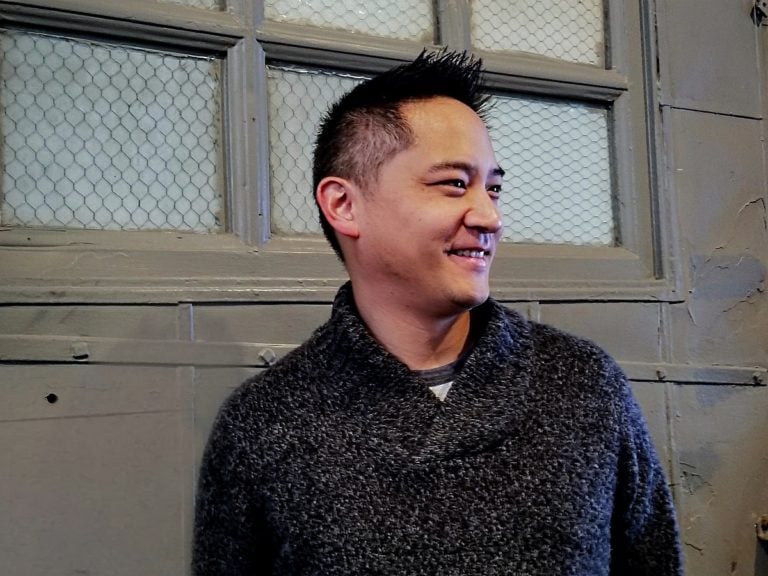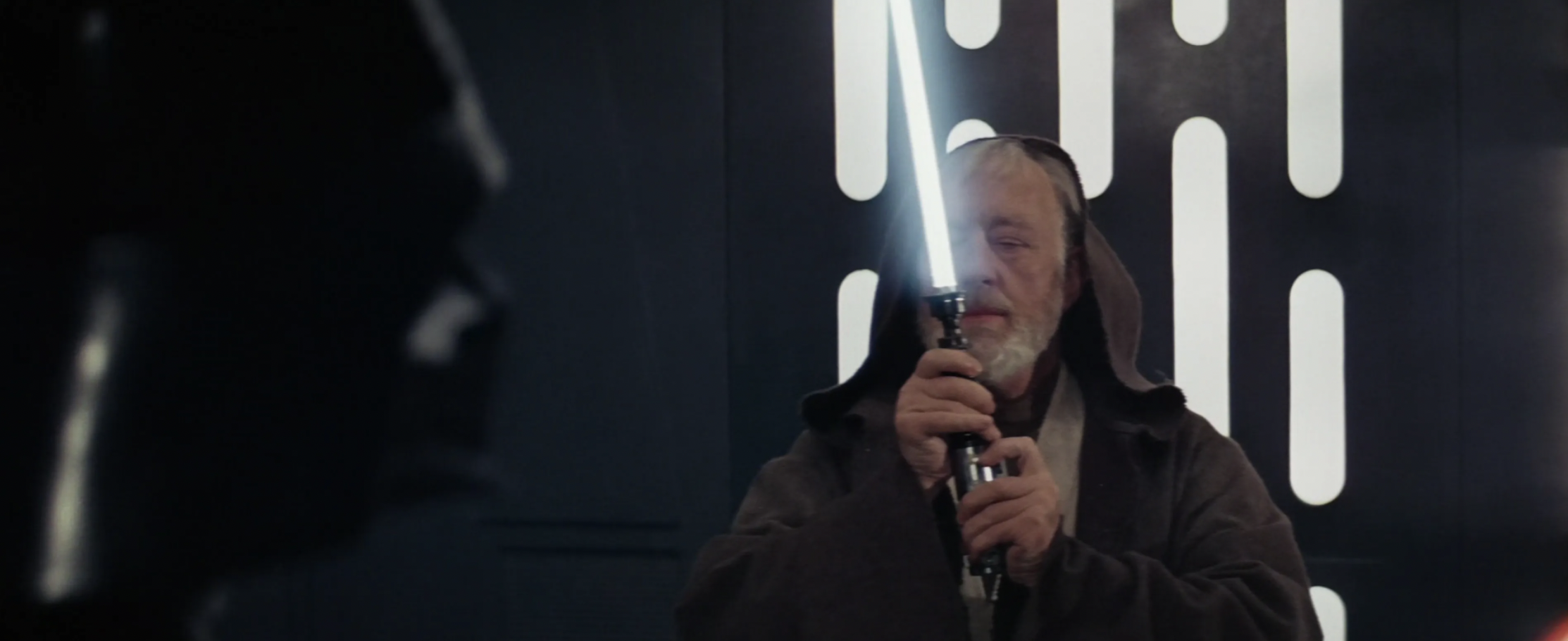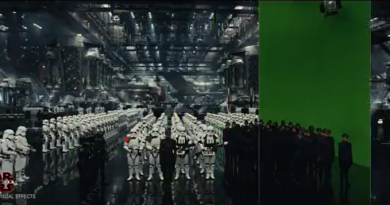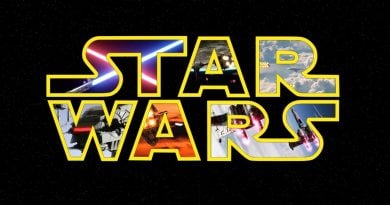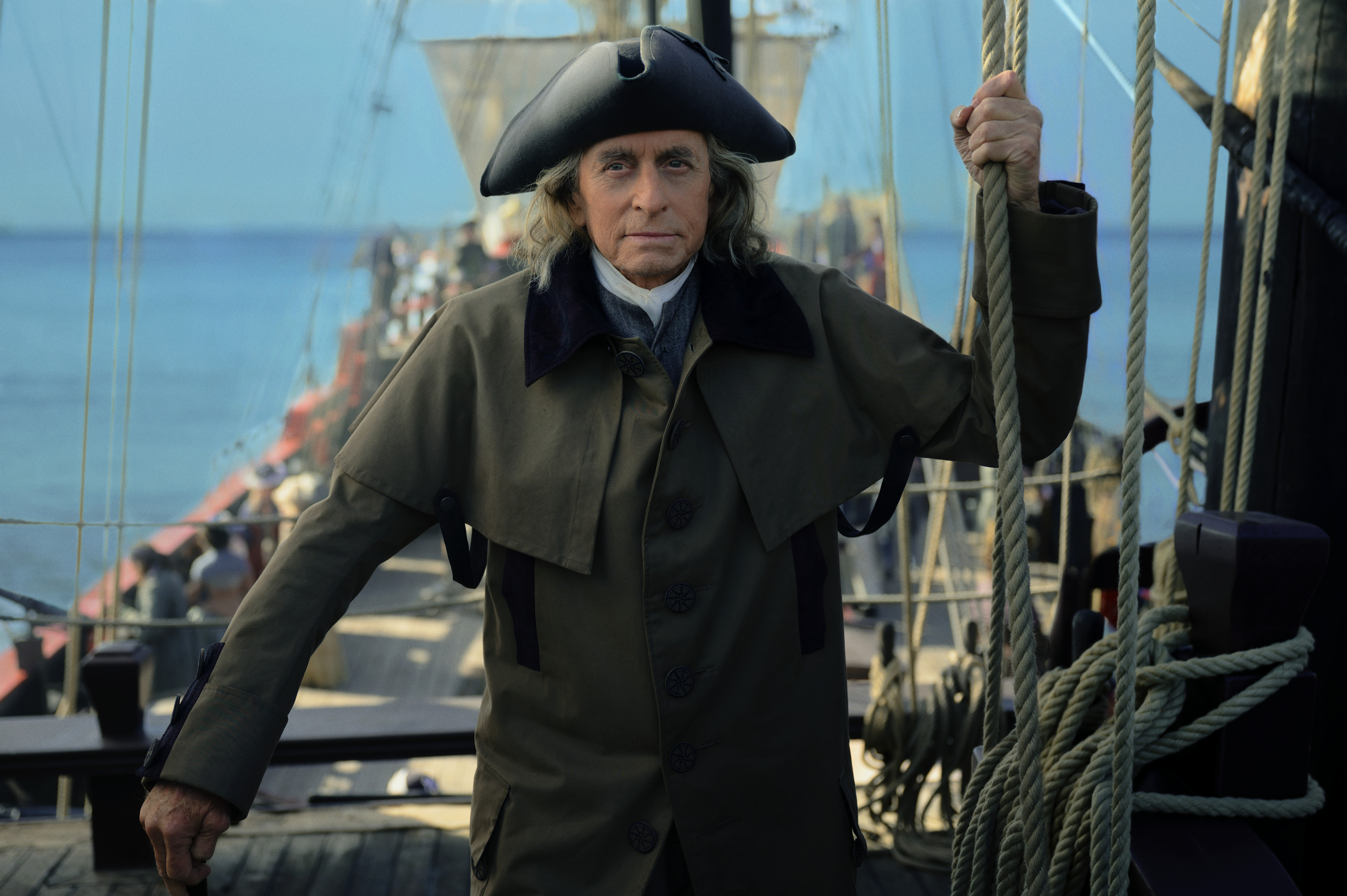Review: Transformation Through Love and Friendship in ‘Star Wars: Brotherhood’ by Mike Chen
Mike Chen did it! He gave me the story I’ve been waiting for. One of the most striking things about A New Hope as a child is the melancholy smile of Obi-Wan Kenobi, remembering Luke Skywalker’s father as a “good friend”. The exploration of that friendship is something I’ve wanted for years. The Clone Wars and Matthew Stover’s Revenge of the Sith novelization supplemented what little friendship the prequels portrayed. Those are great, but both are shadowed by the turmoil of a galaxy at war. In Brotherhood, the forthcoming novel from Mike Chen, the friendship and bond between Obi-Wan Kenobi and Anakin Skywalker are explored in a much quieter space and smaller scale. Their strength isn’t in their lightsabers, it’s in the emotional vulnerabilities they face while the bond they share changes.
There could be no other title for this book than Brotherhood. Chen makes every effort, most of them subtle while some are more obvious, to establish the devotion between Obi-Wan and Anakin. We’ve only ever seen it when their lives depend on working together. Here, we see each dealing with life drastically (and rapidly) changing around them. Obi-Wan is so accustomed to being the teacher, there is a mourning when Anakin is knighted the Jedi – the empty nest of a Jedi Master without a Padawan.
I’ll keep this review as spoiler-free as I can, but will be touching upon some of the plot elements and new characters introduced. If you want to go in fresh, stop reading here and come back later. What I will say again is Mike Chen wrote a beautiful story, one I’ve been waiting for. If you count Obi-Wan and/or Anakin Skywalker among your favorites, this is essential reading. It’s a quiet, thoughtful story allowing us inside the minds and vulnerabilities of two iconic figures in Star Wars. It’s well worth your time and deserves a spot on your bookshelf among the best Star Wars novels.
The audiobook adaptation, narrated by Jonathan Davis, is also excellent. The sound production and a healthy dose of John Williams’ Attack of the Clones score immersed me in this story. Before writing this review, I took a drive and experienced this story again through this medium. More and more, I’m finding a new appreciation for audiobooks and the Star Wars productions are among the best.
Brotherhood begins shortly after the events of Attack of the Clones and almost immediately after EK Johnston’s Queen’s Hope (Chen notes in the afterword he and Johnston corresponded, as their stories take place so close together). Cato Neimoidia has suffered a devastating terrorist attack, a bombing in a civilian center. As the Clone War is just beginning, Cato Neimoidia is among the systems who have taken a stand of neutrality between the Republic and the Separatists. Though some may see this as indifference, Chen does an excellent job demonstrating reasons planets like Cato Neimoidia wish to avoid the conflict.
We experience this attack through the eyes of two Neimoidians, Ruug and Ketar, two elite commandos in the Neimoidian Defense Legion. One of Brotherhood‘s great strengths is zooming in on the Neimoidian culture and how diverse a planet this is. Chen reminds us how often races and cultures are treated as monolithic in both our own world and the galaxy far, far away. There’s a powerful passage in the later chapters of the book, when the minister of Cato Neimoidia reminds Obi-Wan how their people have been treated in the history of the galaxy and the Republic.
The people of Cato Neimoidia are much more than the Trade Federation. Chen does an excellent job of portraying not only the pride Ruug and Ketar feel for their people, but also the different ways they wish to protect them from the Republic and the Separatists. In the aftermath of the terrorist attack, supporters of both the Republic and the Separatists begin pointing fingers about which is responsible, rather than show real concern for the civilian Neimoidian casualties, an oversight not unnoticed by Ruug and Ketar. The galaxy has pushed the people and culture of Cato Neimoidia into an afterthought, associating them only with the Trade Federation or other economic incentives they can give the Republic or the Separatists. The Neimoidians are tired of the prejudice, stereotypes, and relegated role they’ve been given in the events of the galaxy. They’re concerned with protecting themselves at this point, not fighting a war for those who’ve never cared or bothered to understand them.
Meanwhile, the Jedi Order are ushering in a new crop of Jedi, with Anakin Skywalker among them. The event feels rushed and unceremonious, as the unspoken reality these new Jedi will be sent to the frontlines of war which only seems to be escalating. These early days of the Clone War are period of Star Wars haven’t seen much of, aside from EK Johnston’s Queen’s Hope (our review here). Though the dark side clouds the Jedi’s vision, a mix of optimism and dread remain – and whispers of skepticism about Palpatine’s recent power grab. Obi-Wan ponders all these things, as well as noticing the interactions between Anakin and Padmé seem much different.
As news reaches Coruscant of the attack on Cato Neimoidia, Count Dooku pronounces it’s the Republic who should be blamed for the attack. While Dooku doesn’t blatantly accuse the Republic, he implies their loyalists are responsible. Palpatine and the Jedi walk carefully in a very awkward meeting with their leaders and Dooku. All parties agree to a joint investigation of the attack, with the Jedi dispatching Obi-Wan as their envoy and Dooku sending his own. Though the Jedi are almost certain Dooku and the Sith are behind this, trying to draw Cato Neimoidia to the Separatists, they vow to investigate objectively.
Now that Anakin is a Jedi, he won’t be accompanying Obi-Wan to Cato Neimoidia. Chen inflects a real shared sadness and the worries each of them will carry as they depart on different missions. For the two of them, the new reality of their friendship sets in with the conflicts in the galaxy which will continue to put distance in the close proximity they’ve become accustomed. The sense of symbiosis in their master/student relationship is prevalent, in many ways, now that they’re going their separate ways. These two took care of each other since they were a young-adult and a child. As two adults forced to grow-up, there is a complete loss of the naivety which probably gave both a bit of comfort in their formative years. There was still room for error, for joking, and a future of possibilities. Now, there is only the peril of the galaxy in front of them, and each must face it in their own way. Plus, Anakin has an assignment of his own.
Chen’s decision to put Anakin as chaperone of a youngling journey to Illum is a brilliant one. It’s a great test for Anakin, who is less than thrilled about his new assignment and swears he’ll never take a Padawan. Yes, knowing what we know from Revenge of the Sith, Anakin Skywalker is probably the last person you’d think any author should hand a shipload of younglings over to. Chen utilizes the younglings as mirrors for Anakin, recalling his own youth while still haunted by the death of his mother and his reaction to it. These younglings offer Anakin a chance to ground himself and demonstrate the best of who he can be through teaching, also giving him insight and empathy into the difficulties Obi-Wan likely experienced as his master. There’s a selfless dimension of Anakin we don’t often see in these chapters, a selflessness that doesn’t involve springing to action or swinging a lightsaber. A selfless of being better for others so they can be their best.
The most important takeaway from this assignment is the friendship he develops with a youngling named Mill Alibeth. Mill is a youngling particularly attuned to how the Force affects the emotions of those around her. At this critical time, her senses are being hit hard. Anakin realizes quickly she needs help. There is so much I want to say about it, but I feel it would genuinely spoil the book for readers. Mill is my favorite new character Chen introduces, and she definitely deserves a role in future stories. Her arc through the novel is brilliant meta commentary on the conflicting tenants of the Jedi Order and what the Force actually is in the galaxy far, far away. Skeptical Jedi often make the best points about the altruism the Jedi attempt to embody, but so often fall short of due to their own dogma. The Force ultimately needs to find its own way to help others, and Mill is only interested in that path. By the end of the book, I’d written “PROTECT MILL ALIBETH!!!” several times in my notes, and I’m guessing you’ll be repeating that mantra, too.
Brotherhood also has a great number of prequel favorites whose presence serves a purpose. Dexter Jester plays an important role, briefing Obi-Wan on his experiences with Neimoidians in all the wrong ways (you’ll see what I mean). Sister, the first trans clone, also shows up in this novel after her recent appearance in Queen’s Hope, giving me hope we’ll get more of her story. All of your favorite Jedi are there, and Chen spares no details in how much love does not exist between Mace Windu and Anakin Skywalker. Palpatine is up to his usual grooming antics, planting seeds of doubt where he can. Qui-Gon Jinn doesn’t appear, but the lessons he left Obi-Wan and Anakin are invoked often. And last but not least, Asajj Ventress.
If you’ve been following the excerpts released via StarWars.com you’re well aware Brotherhood is the first meeting between Obi-Wan and Asajj Ventress. Chen gives us a Ventress much closer to the person we met in Cavan Scott’s Dooku: Jedi Lost and makes the character his own. This is a Ventress we haven’t seen. Ventress serves as Dooku’s envoy to investigate the attack on Cato Neimoidia alongside Obi-Wan. She’s not swinging lightsabers and doing impossible acrobatics in her fight against the Jedi. This is a much more careful Ventress, plotting in the shadows and laying a trap for Obi-Wan and the Republic. Her purpose is to widen the gulf of mistrust between Cato Neimoidia and the Republic. By channeling her own resentment and mistrust of the Jedi, Ventress is an evangelist of anti-Jedi sentiment, whispering it in the ears of the people she needs to manipulate and do the Sith’s dirty work for her. Ventress is one of my favorite characters, and I adored every page she graced. Her presence is limited, but Chen uses her so effectively when she comes into the story. And you get the sense she’s always there, watching Obi-Wan’s every move.
Chen’s handling of all the characters provides an intuitive understanding of each and doesn’t overwhelm. It’s easy to overstuff these stories with cameos and new characters, but there’s no sense of that here. Sometimes in Star Wars novels I find myself flipping back chapters or pages to be sure I’m not confusing characters. Each chapter is from a character’s perspective, so it’s easy to pick-up where you left off. More and more I’m realizing my favorite Star Wars books utilize this. Brotherhood is one of the shorter Star Wars novels, but it doesn’t feel like it at all, mostly because the cast of characters is so rich and the story is told through their feelings, experiences, and actions.
Brotherhood is also a great Star Wars mystery, which is why I don’t want to elaborate on more of the story. Obi-Wan’s investigation takes several turns, and the revelations at the end of the story are ones I didn’t see coming. These aren’t half-baked, gotcha-twists, either. Chen does an excellent job laying the groundwork for some of the more shocking moments so when you get to them, you’ll be surprised and rewarded. Trust me, I’m of the mind the “twist for the sake of twists” is a cardinal sin too often employed in storytelling. You’ll find none of that here, Chen is economical and precise with the mystery and all the players involved.
I came to Star Wars: Brotherhood with a very high bar. Obi-Wan Kenobi is my favorite characters in Star Wars. And while I had in my head this book would mostly be about him, Mike Chen pleasantly surprised me with a story incorporating everything I wanted Kenobi-related and so much more. It’s a much bigger story than Obi-Wan Kenobi. Brotherhood is a story about finding our own truths through own questions and being open to the questions of others. Friendships, bonds, and love we have with others can’t remain static. Though it’s familiar, it should be transformative. Brotherhood is the love of two friends who know the best way to cherish their bond is to allow that transformation, trusting they can take care of themselves so they can be there for each other.
We all know where the bigger story ends. Obi-Wan faced his friend for the last time in the corporeal in A New Hope. He never states why he’s so determined to confront Darth Vader on the Death Star, so we’re all free to speculate. The obvious is to pull Vader’s attention away from Luke and the rescue of Leia. Another part of me likes to believe Obi-Wan wanted to face his friend, one last time, to be a mirror. A mirror of peace, strength, and the bond they once shared. A bond Obi-Wan holds true and honors through his actions. A last reminder to his lost friend that no one’s ever really gone.
RATING: 8.5/10
Star Wars: Brotherhood is available for pre-order and available on May 10 wherever books are sold. You can pre-order the audiobook here, available the same day. Special thanks to Lauren Kretzschmar, Brittanie Black, Del Rey, and Penguin Random House Audio for the advanced copies used in this review.
Kyle Larson lives in Portland, Oregon. When he's not running trails, he's reading and writing.

